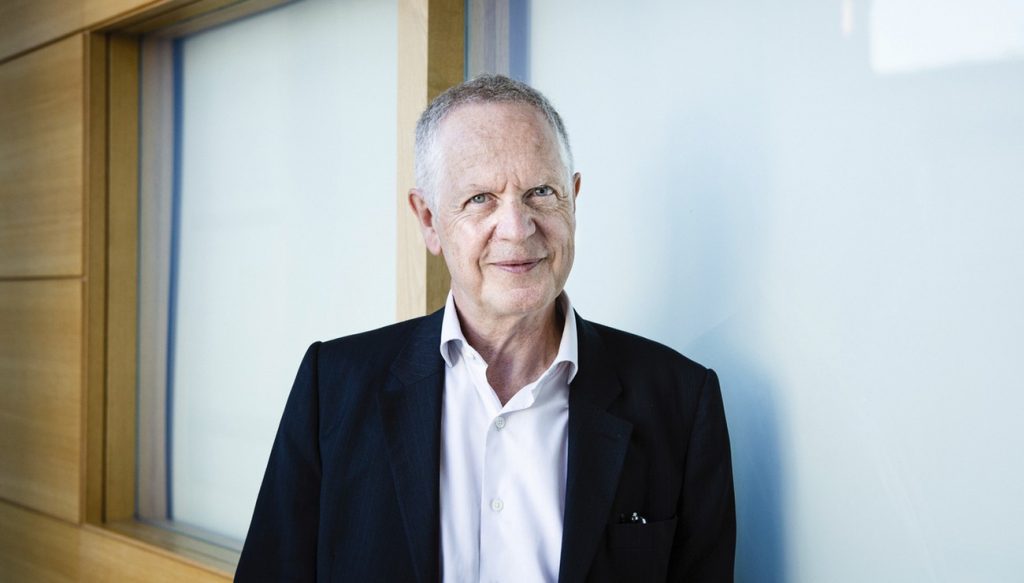
Physicist Jean Dalibard CNRS 2021 Gold Medal
In the 1920s, almost a century before, a generation of brilliant physicists opened the doors to an amazing world, the world of quantum physics. By closely combining empirical methods and theoretical formalism, they have built the foundations of a framework that allows us today to understand the properties and interactions of fundamental particles and matter. Quantum physics is ubiquitous in our daily lives and is the basis of many applications: lasers, transistors, magnetic resonance imaging, atomic clocks, etc. Born in 1958, Jean Dalibard carried the torch of the founding fathers of modern physics and established himself during his career as an eminent theorist and experimenter. He is now awarded the CNRS 2021 Gold Medal for his pioneering role in the study of ultracold quantum matter.
Researcher at CNRS since 1982, member of the Kastler-Brossel Laboratory in Paris, member of the Académie des Sciences since 2004, Professor at the Collège de France since 2012, Jean Dalibard is a specialist in quantum mechanics. Early in his career, he worked with Alan Aspect on the violation of Bell’s inequality, which shows that quantum physics is highly non-local.
The rest of his career focuses on the interactions of matter and radiation and the manipulation of atoms with lasers. He is preparing his doctoral thesis under the supervision of Claude Cohen-Tanduji on this topic. He then studied quantum gases, in particular Bose-Einstein condensates. What is it about? Particles and atoms possess a property called spin which corresponds to an angular moment of quantum nature. Some, like electrons, have half-integer spins (we are talking about fermions, after the name of the Italian physicist Enrico Fermi) and are subject to the Pauli exclusion principle, which prohibits the existence of fermions in the same quantum state. Particles vector of fundamental interactions, such as a photon, or certain atoms having integer spin; They are called bosons (after the Indian physicist Satyendranath Bose). Bosons are not restricted by the exclusion principle. In 1924, Albert Einstein, generalizing Bose’s work, imagined that by sufficiently cooling an ideal gas of atoms, they would all find themselves in the same low-energy state, resulting in definite collective behaviour. capacitors.
In 1938, after Piotr Kapitza and colleagues discovered superfluid helium-4, Fritz London hypothesized that this behavior of cooled helium stems from the fact that this system is a Bose-Einstein condensate. But if about 10% of the atoms are already in their ground state, we are far from the ideal gas that Einstein imagined, because atoms interact strongly with each other.
The extremely cold, dilute atomic gases become candidates for the formation of Bose-Einstein condensates. Obtaining it is the main technical challenge. In 1995, Eric Cornell and Karl Wyman produced the first capacitor of this type. Jean Dalibard actively contributed to the development of tools to address these systems. For example, he developed the principle of the photomagnetic trap. This device begins by cooling a cloud of atoms (such as rubidium) using a laser. The atoms are then placed in a non-uniform magnetic field to be confined at a constant temperature for a few seconds to a few minutes in the center of a vacuum chamber without touching its walls. The final cooling step called evaporation, which consists in removing the most active atoms and allowing the remaining gas to return to an equilibrium state, makes it possible to reach temperatures of a few hundred nanokels. This technique has become essential for studying Bose-Einstein condensates.
Jean Dalibard remarkably studied the vortices that form in these ultra-cold quantum systems. When the capacitor is placed in rotation, it forms certain structures and vortices. In the latter case, the velocity of rotation of the fluid, around an axis in which the density is zero, has the peculiarity of being quantifiable, that is, taking discrete values only according to the rules of quantum mechanics. Jean Dalibard and his colleagues helped characterize the properties of these vortices.
Capacitors have rich behaviors that touch on the basic principles of quantum physics. They also show the interesting properties of consistency and controllability. These properties allow for many applications: atomic precision lasers, precise clocks, measuring instruments, etc. Another avenue discovered by Jean Dalibard and colleagues is quantum simulation. The capacitor can be prepared to serve as a platform for simulations of complex quantum systems, involving disciplines as diverse as nuclear physics, astrophysics or solid-state physics.

“Organizer. Social media geek. General communicator. Bacon scholar. Proud pop culture trailblazer.”
